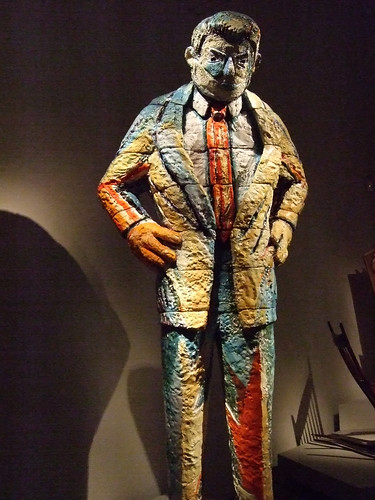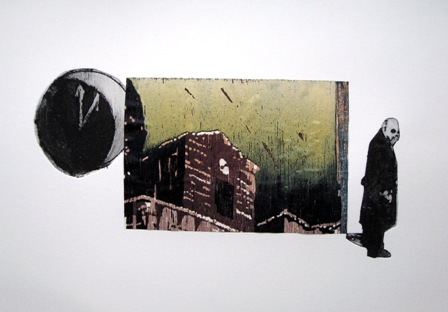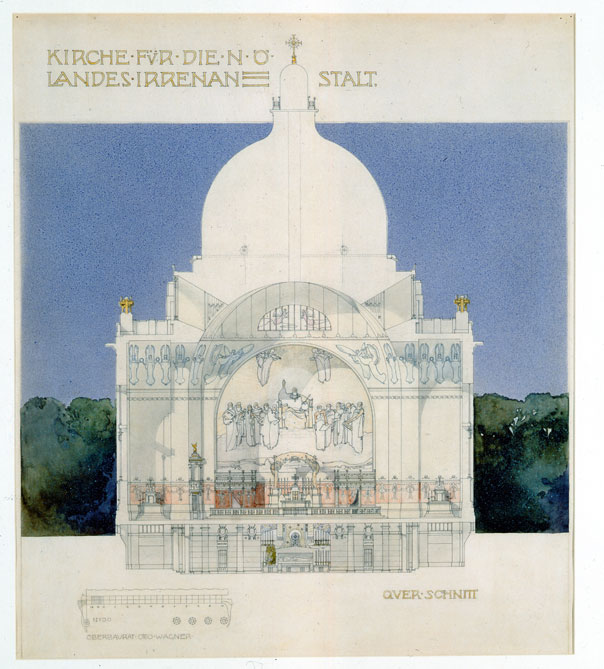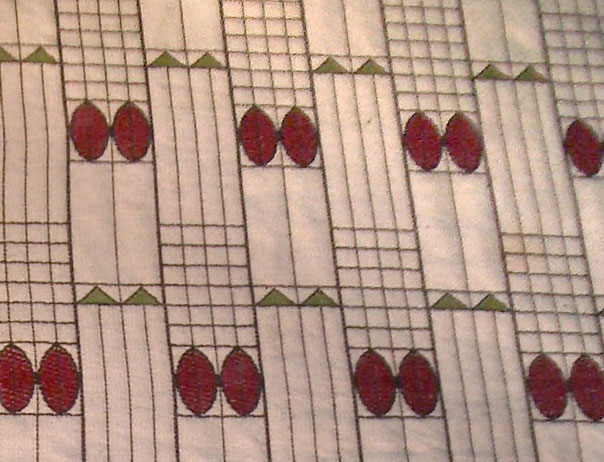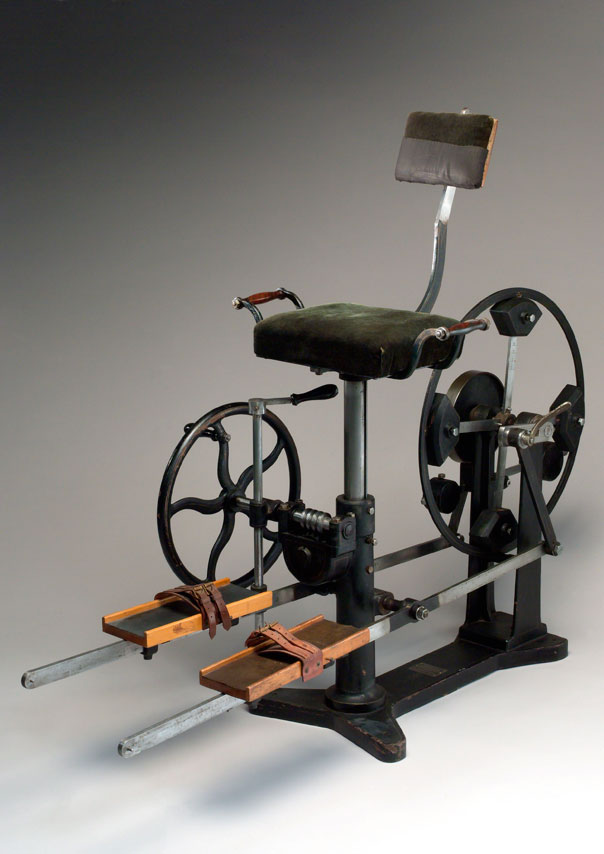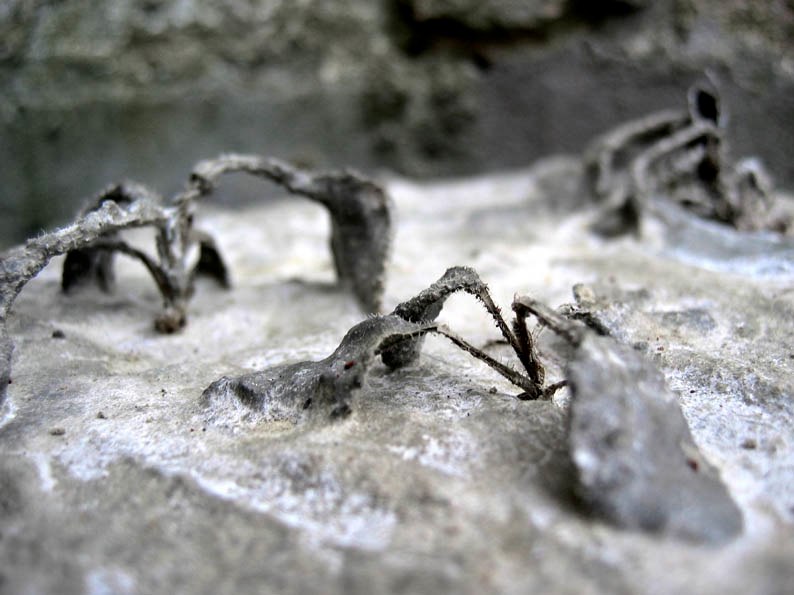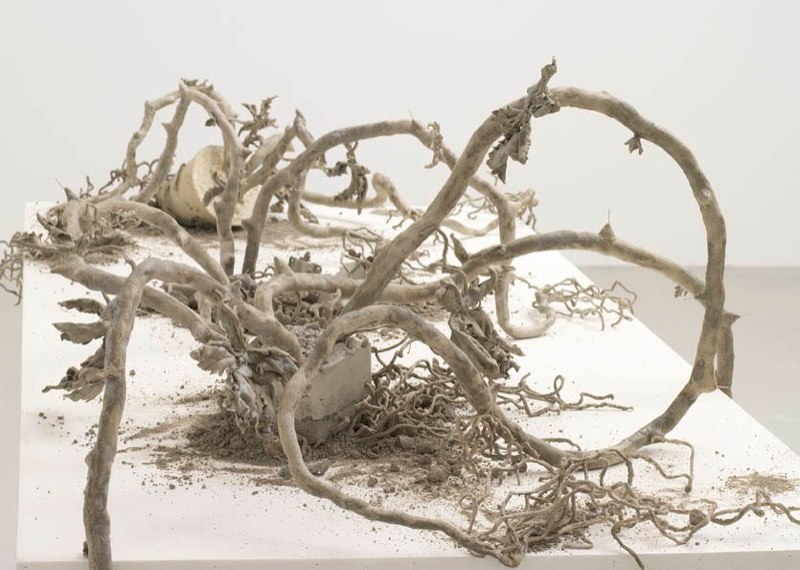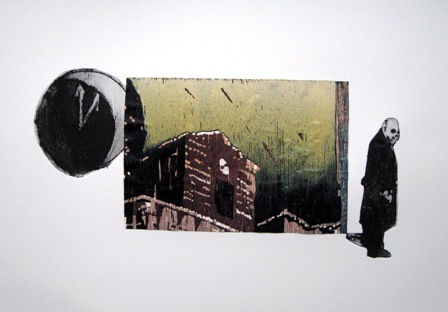Having waited until most of the galleries are actually open, I’ve returned to Bethnel Green yet again to see some of the cutting edge works on display in the bevy of galleries there. First, however, I took a little trip back to Fitzrovia to check out Approach W1.
There are two Approach galleries, E2, in Bethnel Green (over the Approach Pub) and W1, in Fitzrovia, just above Oxford Circus (E2 and W1 are postal codes). I am more interested in the works of Chris Brodahl than I am in the works on display at E2.


It was a nice show, but not so much of the work really did it for me. I guess I may not be the audience for this stuff. I do like the pieces above, they are evocative of the work of Francis Bacon or some of his contemporaries. Oh well, off to stroll Oxford Street a little bit (it’s a “no traffic day” so that is made easier) and maybe shop a bit.
I end up shopping more than I want as the tube is suddenly shut for an “emergency” so I have to wait that out before finally getting into the station and on my way to the East End.
Once there I stroll up Cambridge Heath road to a few galleries Anne Redmond had clued me into. First on the list is “Look! No hands”at ¢ell Project Space, This is a group show featuring Athanasios Argianas, Kim Coleman & Jeny Horgarth and Simon Faithfull. The first piece we encounter in the darkened first storey location off the main road and back a mew is Simon Faithfull’s 1996 work, “Going Nowhere.” This is a video loop running about 9 minutes (I believe) in which the cameraman starts a video camera which is looking into the distance across the Oxfordshire landscape. It is winter and we see a snow covered field reaching to the horizon, a tree line in the distance, and an army of clouds on the march above. Once the camera starts rolling, the cameraman crosses from behind the camera and into the shot. He trudges off over the horizon over about two minutes, and leaves the camera, and us by proxy, behind.
This is the core of Simon’s work, and really this show. It is about what happens after the artist has taken their hands off of the work, hence “Look! No hands.” as the title of the show would have it. At first my reaction to Going Nowhere was, Okay, that’s enough of that… I waited, however, and started to think about the act of the artist, he has faith in his equipment and his setup and once he has got the machine started, the art machine, he just leaves it go for a while. This si either an act of hubris or one of exploration. I think it is in fact a mixture. In a way it made me think back to my days of exhibit development in a science museum. I would spend years making an exhibit, thinking it up, collaborating on design, watch it get built, etc. Then a day would come and it would go out on the museum floor. Then I could only watch to see how well it did its job as the public interacted with it.
About this time a shape appeared on the horizon and roused me from my reverie as Faithfull approached the camera again and shut it off. I guess he went nowhere, but I was left to think.
The other two rooms in the exhibit were less complex, in many ways, from the first. Kim Coleman & Jenny Hogarth provide four works, “Connect, (Venetian Blinds)”, “Connect, (hair dye)”, “Sugar Paper” and “Museum Light” all from 2008. Of these I most liked Sugar Paper which was shot from above looking down on a table covered with coloured construction paper (sugar paper) and a pair of hands move that paper about. It is projected from above onto a similar table, also strewn with sugar paper, which makes for an unnerving viewing experience as disembodied hands reach out and move the paper about, or so it appears until you look closely and realize that the real paper is stationary whilst the projected images are moving.
Venetian Blinds and Museum Light both are experiments in projecting an image of an object onto that same object (much like Sugar Paper). Venetian Blinds is the more effective of these (or else I am just too literal minded) as the projected blinds are opened and shut you almost do a double take to see if the real blinds just changed.
Lastly, Athanasios Argianas’s A demonstration of one thing as many as a demonstration of many things as one (I was swept off of my feet) is a masterfully effective piece of art. A pylon build of metal truss work rises out of a plinth in the centre of the room. Across this truss-work are three strips of white material (poster board or foam core) each about 3″ by 18″ wide and at different angles to you, one closer on the right, one on the left, the third about even. A projector fills each strip with imagry of three women, one on each strip, (one on the right, one the left, one the middle) as they start into singing rounds of a simple song. The interaction between these different planes, different strips, different coloured filters…It is quite beautiful, and I staye and watched it for more than a couple of cycles through the roughly 2 minute loop.
Okay Cell, on to monikabobinska gallery, just down the block. I needn’t have waited for them to open to see the installation piece by Sinta Tantra, for it is the paint job on the building itself. Interesting, but not really my cup of tea. Oh well. On to Vyner street and a whole bevy of galleries which dot the landscape. (Interesting sign seen on one building, “This is not a gallery!”)
Vyner Street is a few blocks of old factory and warehouse building backing on the eastern branch of the Regents Canal. There are small galleries all along the street. I stopped into all of them I could find, and as not all of them had handouts or cards, I am doubtless going to miss some.
First was Rene So at Kate MacGarry, a collection of bulbous busts which reminded me more of Pop-Art chess pieces than anything:

Again, not my style, but what the hell.
Then I crossed the street to Breaking New at Five Hundred Dollars an artist supported gallery conceived from the first to have a limited life of just a few months. This group showing consists of many artists. I will call attention to Aliki Braine for Forest (parts I – III):

And Tessa Farmer for A Prize Catch (series):
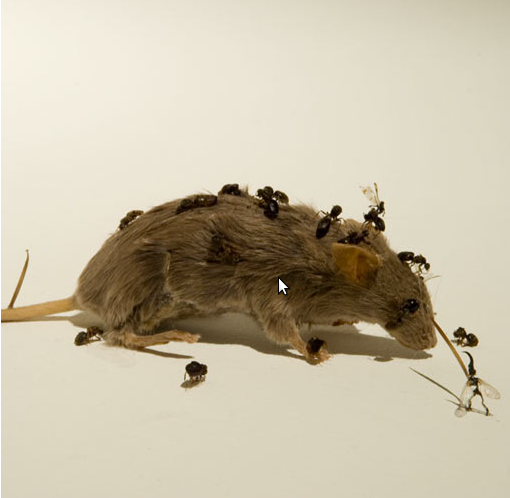
There is other stuff you may like, so check out the website.
VINEspace gallery feature Your face, your race, the way you talk…I kiss you, you’re beautiful I want you to talk modern photography by Neil Drabble, Sean Fader and Oskar Slowinski. Of these easily Sean Fader’s work has the most impact on me. Neil Drabble offers us Roy, a documentary study taking place over an 8 year period and focusing almost exclusively on his subject, Roy, coming of age. It is interesting, but doesn’t really inspire any thing stronger in me. Oskar Slowinski offers us some intriguing candid street shots, but again nothing too special to me. Sean Faber, on the other hand, offers us this:


Here he is digitally manipulating images to show us him in other forms (or skins) or him in the ultimate act of narcissism. Quite effective, I thought.
Don Joint Waldameer and Chuck Webster at FRED were nice, Joint certainly a masterful collage artist, but neither grabbed me.


The Götz Füsser Studios is showing paintings by Bryan J Robinson. His small watercolours got my attention, but his featured big works seemed like someone had gutted Keith Harring over a canvas and framed the results:

Nettie Horn gallery features The Hidden Land with Gwenaël Bélanger, Daniel Firman, Ori Gersht and Lori Hersberger. Upon entering the gallery you are instantly confronted by Le Faux Mouvement (2008) by Bélanger, and it is truly stunning both in scale and for its captured moment:

The other works are quite eye catching as well. Ori Gersht’s series Falling Bird is a stunning use of photography to mount an exploration behind a classic still life by Chardin. Originally a short film shot with high definition, high speed cameras, Gersht captures the plunge of a pheasant into a dark pool of fluid, next to some grapes arranged on a shelf above the water. It is quite a series.

I am going to speed through the rest of this because this post is already too long and I want to save some space for the highlight of my trip.
A quick mention is due Alex Echo Arts who opens up his working studio on Saturdays for inquisitive (and no doubt acquisitive) art fans. I liked his complex collage work as well as his experimentation with incorporating words into his works. Check his website (link above) to see what I mean.
Dialogue at Vyner Street offers up Remnants of our past by Gerard Mannix Flynn. This installation piece features hundreds of rifle stocks and thousands of rounds of spent ammunition to try to teach us a little bit about the emotional costs of entanglements, but more importantly of disentanglements. He is referring, specifically, to the disarmament process following the Good Friday agreements which brought “The Troubles” in Northern Ireland to an end. Again, check the website (link above) to see for yourself. The thousands of rounds of ammunition scattered about on the exhibit floor made this the most interesting tactile experience of the day.
Lastly some °art, host the Signature Photography Awards 2009 show. This annual awards series honours some of DegreeArt’s crop of graduating or recently graduated student artists. I am a big fan of young artists, and fully endorse Degree’s stated mission, “Invest in the artists of the future.” There is much for these young artists to be proud of. I will bring special note to A Dream from the Posted series by Natalie Tkachuk, from the 2007 class of University College, Falmouth. Here is that piece:
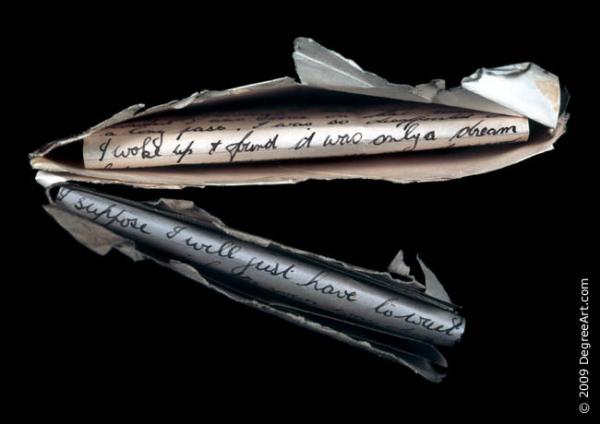
Natalie Tkachuk - A Dream
This features wartime letters from Frank to Maude, and in each in the series Natalie has carefully folded the letters within the envelopes so that particular lines from them are visible through the open slit of the envelope. In this the top one says, “…a long past. I was so disappointed as I woke up to find it was only a dream.” And the bottom one reads, “I suppose I will just have to wait.”
Another piece which really struck me was Hammered (no pun intended).
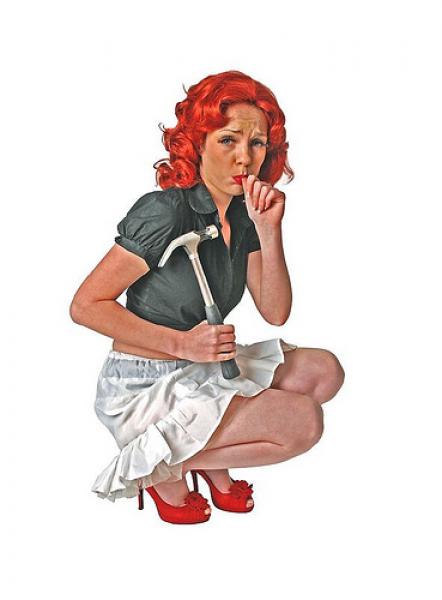
Catherine Dwyer Harvey - Hammered
This homage to the classic pin-up photograph effectively addresses the power imbalance implicit in those, while having a sense of humour about it. Contrast this to those dreadfully cold and violent images by Helmut Newton I wrote about the other day. The young Catherine Dwyer Harvey is a clear winner in that competition, and she won the Singled Out Portraiture Finalist in this competition, as well. Keep you eye out for her work.
Do yourself a favour and check out °art website (link above), you will not be disappointed at the huge range of works and artists they offer.
At last finished I took a stroll through part of Victoria Park and then back on the tube. I saw this upstairs from a shop on Montmarch Street and though it looked interesting.

Ta!




